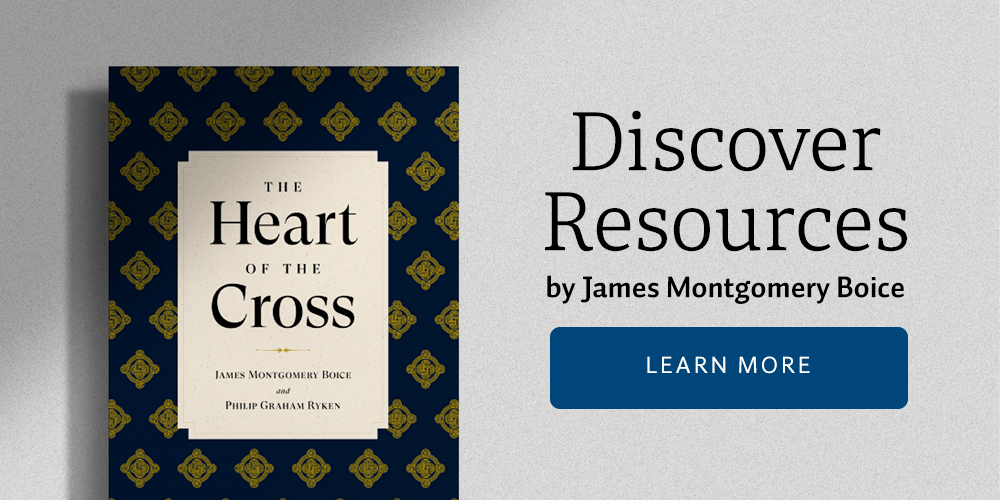But the chief priests, taking the pieces of silver, said, “It is not lawful to put them into the treasury, since it is blood money.” So they took counsel and bought with them the potter’s field as a burial place for strangers. Therefore that field has been called the Field of Blood to this day.
How exactly did Judas die? And how should we understand Matthew’s strange reference to Jeremiah to explain the priests’ decision to use Judas’ blood money to buy the potters field? “Then what was spoken by Jeremiah the prophet was fulfilled: “‘They took the thirty silver coins, the price set on him by the people of Israel, and they used them to buy the potters field, as the Lord commanded me’” (vv. 9, 10). It is a pity to break the application of Judas’ story to ourselves in order to deal with these problems. But they are well known. You may be wondering about them, and we need to get them out of the way before we wrap this study up.
1. How did Judas die? Matthew is the only gospel writer to give an account of Judas’ death, but Luke refers to it in Acts and seems to be saying something quite different: “With the reward he got for his wickedness, Judas bought a field; there he fell headlong, his body burst open and all his intestines spilled out. Everyone in Jerusalem heard about this, so they called that field in their language Akeldama, that is, Field of Blood” (Acts 1:18, 19).
On the surface this seems to be entirely different from what Matthew tells us, not only that Judas died by falling rather than by hanging but also that it was he who bought the field. But this is merely a case of our having insufficient data to put the entire picture together. We can conjecture that Judas hanged himself, that his body fell into a ravine somewhat later, and that the field was purchased either beforehand, Judas seeking it out for his suicide, or afterward as a place the priests now judged to be polluted. As for Judas having bought it, the purchase would have been understood that way by the authorities who wanted nothing to do with his money and would have considered it to have been Judas’ even after he threw it down in the temple.
2. Where is the verse in Jeremiah? The second problem is a bit more substantial. To begin with, there is no verse in Jeremiah like the one Matthew cites. There is something like it in Zechariah 11:12, 13. Zechariah’s verses concern a potter, thirty pieces of silver, and Zechariah’s throwing the money into the house of the Lord. But the verses are not about a person who betrays the Messiah, and there is nothing about buying a field. On the other hand, Jeremiah 19 describes a symbolic action in which Jeremiah buys and then breaks a potter’s jar, symbolizing the destruction of the nation, and chapter 32 describes the purchase of a field. Yet there is no apparent connection between Jeremiah’s two chapters or between the words or actions in Jeremiah and Zechariah.
Most people assume that the closest verbal reference is to Zechariah and explain Matthew’s attributing the words to Jeremiah in various ways: that Matthew made a mistake, that there is a copyist error (Jeremiah having been written instead of Zechariah, that Matthew knew of another book by Jeremiah now lost, that Jeremiah actually wrote words that Zechariah borrows, or that the scroll Matthew refers to was the scroll of Jeremiah to which the minor prophets were attached. None of these are very satisfactory explanations. The best explanation is probably that Matthew was pulling together a number of passages that seemed to add significance to the death of Jesus’ false but well-known disciple, Judas. The reference to Jeremiah 19 seemed appropriate because it refers to “innocent blood” and because the place where the prophet broke the jar would eventually be used for a burial ground for those who were to die in the siege of Jerusalem. The reference to Zechariah and his role as a shepherd of the people adds the ideas of the rejection of Jesus as the true shepherd of the flock, his being valued at the price of a mere slave, and the betrayal money being cast into the temple.
If this is the right way to approach this problem, we should probably think of Matthew as dealing with Old Testament patterns rather than with specific verbal prophecies. D. A. Carson probably summarizes it best when he writes, “Matthew sees in Jeremiah 19 and Zechariah 11 not merely a number of verbal and thematic parallels to Jesus’ betrayal but a pattern of apostasy and rejection that must find its ultimate fulfillment in the rejection of Jesus, who was cheaply valued, rejected by the Jews, and whose betrayal money was put to a purpose that pointed to the destruction of the nation.”1 In any case, Judas’ role in the betrayal was not unknown to or unplanned by God, since it had been prophesied that one who was close to Jesus would lift up his heel against him (Psalm 41:9; John 13:18; Acts 1:16) and because Judas was appointed to this end from the beginning (John 18:12).
1 D. A. Carson, Matthew in The Expositors Hille Commentary, vol. 8, Matthew, Mark, Luke (Grand Rapids: Zondervan, 1984), p. 566. For a fuller discussion of this problem see pages 562-566.
STUDY QUESTIONS
According to Dr. Boice, how do we reconcile the story of Judas’ death in Matthew with the story in Acts 1:18-26
Why, most likely, did Matthew quote from Jeremiah chapter 19 and Zechariah chapter 11?
FURTHER STUDY
Study the passages from today’s lesson (Psalm 41:9; John 13:18; 18:12; Acts 1:16) containing prophecies about Jesus’ betrayer, Judas.






